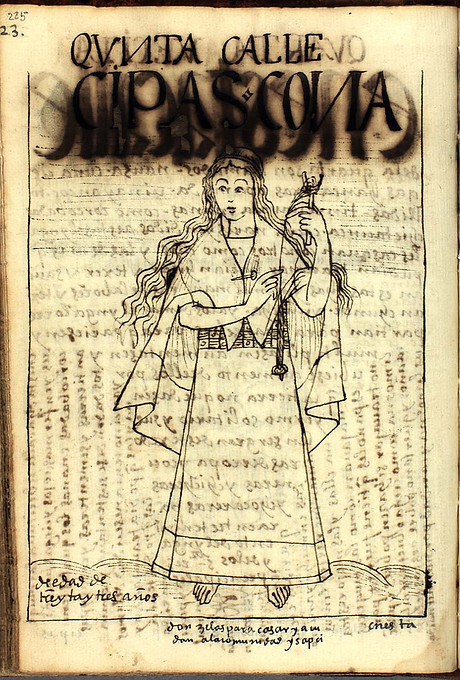Mining Our Past
A Comparison of Peruvian Silver Refineries with West Virginia Coal Mines

Who were they?
In Peru, silver miners and refiners were a mix of indigenous people forced off their land to labor, and enslaved Africans. This population also included mestizos (individuals of mixed-race ancestry), as well as European immigrants. Men and women worked in the mines and refining camps in equal numbers. Historical documents describe female miners 7, and archaeologists have found artifacts associated with women, such as tupu shawl pins, jewelry, necklace beads, and spindle whorls used for spinning raw wool into workable yarn.
Image above: 18th century water color of a mixed-race woman by bishop Martínez Compañón. Drawings often depicted mixed-race individuals from the unions of indigenous Americans, Europeans, and Africans. Racial categories were important to Spanish colonial rule, and the Spaniards placed themselves at the top of the hierarchy. Codex Martínez Compañón (1782–1785). Courtesy of the Biblioteca Virtual Miguel de Cervantes. Madrid, Spain.
Who were they?
Indigenous women in colonial Peru
Right: A drawing from Felipe Guaman Poma de Ayala’s 1615 chronicle depicting Peruvian life under Spanish colonial rule. An indigenous woman is shown using a spindle whorl to make yarn, while her shawl is fastened with a tupu pin.
Items such as spindle whorls and shawl pins, along with jewelry, have been found at mining sites in Peru. These items help tell the story of female miners, and tell us women were living and working alongside men in the Peruvian mining industry.Courtesy of the Royal Danish Library, GKS 2232 4°: Guaman Poma, Nueva corónica y buen gobierno.

Women's Objects from Peruvian Refineries
Spindle whorls, shall pins, earnings, and beads.
 Ceramic spindle whorl |  Tupu shall pin |  Copper twine earrings |
|---|---|---|
 Clear glass bead |  Clear glass bead |

Who were they?
West Virginia
In West Virginia, many coal miners in the 19th and 20th century came from rural and farming backgrounds, although they were not forced into mining labor like their Peruvian counterparts. The mining population was also ethnically diverse. Coal miners included European immigrants from Italy, Poland, and Hungary, African Americans from the south, and local white farmers. While women were present in coal camps, they did not often perform the actual mining duties like in Peru. Instead, they oversaw household activities, such as cooking and making clothing.
 |  |  |
|---|
Who were they?
Women and children in the WV coal camps
Women didn't often work underground in the coal mines. However, their roles were very important to the coal camp system. They were in charge of providing food and clothing for the miners.
Right: This 1920 photographs shows women and children in a tent colony in WV. Courtesy of the West Virginia Mine Wars Museum.






